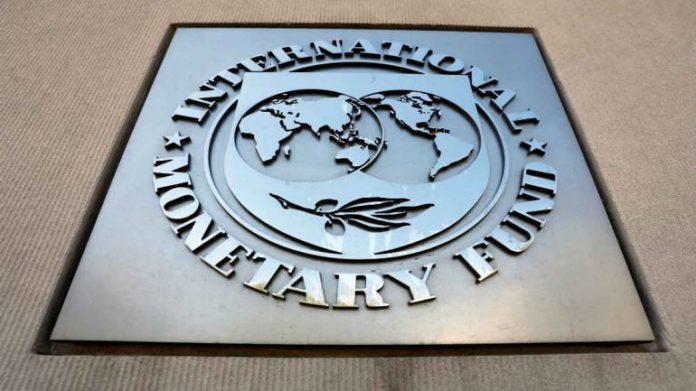The International Monetary Fund (IMF) has categorized Ghana as a highly risk debt distress country.
This follows “ 2021 Article IV Consultation with Ghana” report which reveals the damage the novel, coronavirus pandemic had a severe impact on Ghana’s economic activity.
Growth slowed to 0.4 percent in 2020 from 6.5 percent in 2019, food prices spiked, and poverty increased. The fiscal deficit including energy and financial sector costs worsened to 15.2 percent of GDP, with a further 2.1 percent of GDP in additional spending financed through the accumulation of domestic arrears. Public debt rose to 79 percent of GDP. The current account deficit widened slightly to 3.1 percent of GDP as the decline in oil exports was partially offset by higher gold prices, resilient remittances, and weaker imports.
According to the IMF report, The Ghanaian Cedi remained stable against the US dollar, partly due to central bank intervention, and gross international reserves remained at 3.2 months of imports. External and domestic financing conditions tightened considerably at the start of the pandemic, but have improved since, and Ghana successfully returned to international capital markets for a US$3 billion Eurobond issuance in March 2021.
Ghana, like other African countries was hit hard by the COVID-19 pandemic. The government response helped contain the pandemic and support the economy, but at the cost of a record fiscal deficit. The economic outlook is improving, even though risks remain, including from the evolution of the pandemic and rising debt vulnerabilities.
The Executive Directors of the Fund noted that the pandemic had a severe impact on Ghana’s economy, with slower growth, higher food prices, and increased poverty. Directors commended the Ghanaian authorities for their proactive response to the COVID-19 pandemic, which mitigated its economic impact, but contributed to a record fiscal deficit and increased public debt vulnerabilities; hence agreed with the thrust of the staff appraisal.
While there are encouraging signs of an economic recovery, they noted that it remains uneven across sectors. In this context, Directors stressed the importance of entrenching prudent macroeconomic policies, ensuring debt sustainability, and pressing ahead with structural reforms to deliver a sustainable, inclusive, and green economic recovery .
While noting that risks to Ghana’s capacity to repay have increased, Directors concurred that they are still manageable and that Ghana’s capacity to repay the Fund remains adequate.
The IMF Directors were highly impressed with the fiscal adjustment envisaged in the 2021 budget.
They stressed that fiscal consolidation is needed to address debt sustainability and rollover risks, as Ghana continues to be classified at high risk of debt distress. To protect the most vulnerable, considerations could be given to more progressive revenue measures and a faster return to the pre-pandemic level of spending, with a shift towards social, health, and development spending. Directors also encouraged the timely completion of the planned audit of COVID‑19 emergency spending and new expenditure arrears.
Monetary policy stance broadly appropriate
Directors agreed that the monetary policy stance remains broadly appropriate, while noting that tighter policy would be needed if inflationary pressures materialize. Although gross international reserves are relatively high, Directors stressed the need to guard against erosion of external buffers and remain committed to a flexible exchange rate regime. Directors also encouraged the authorities to limit monetary financing of the deficit.
IMF highlighted that the financial sector cleanup had made the sector more resilient but stressed that banks’ growing holdings of sovereign debt creates risks and crowds out private sector credit. In this regard, they took positive note of ongoing supervisory and regulatory reforms, which are important steps to protect financial stability . Directors also welcomed the improvements in the AML/CFT framework that allowed Ghana to exit the FATF “grey list”.
Stressing on continued capacity development efforts in these areas:
The Executive Board of the International Monetary Fund (IMF) concluded that authorities’ structural transformation and digitalization agendas are critical to support the recovery.
They noted that the structural transformation can be complemented by the ongoing energy sector review, diversification in tourism, and the digital transition, which has the potential to reduce corruption, boost tax revenues, and improve service delivery.
| Ghana: Selected Economic and Financial Indicators, 2019–22 | ||||
| 2019 | 2020 | 2021 | 2022 | |
| Act. | Prel. | Proj. | Proj. | |
| National accounts and prices | (annual percentage change) | |||
| GDP at constant prices | 6.5 | 0.4 | 4.7 | 6.2 |
| Non-oil GDP | 5.8 | 0.9 | 6.4 | 5.9 |
| Oil and gas GDP | 14.4 | -4.6 | -14.6 | 10.3 |
| Consumer price index (p.a.)1 | 7.1 | 9.9 | 8.9 | 8.5 |
| Central government budget (cash basis) | (percent of GDP) | |||
| Revenue | 14.3 | 12.9 | 14.9 | 15.0 |
| Expenditure | 21.8 | 28.2 | 28.9 | 25.4 |
| o/w financial and energy sector costs | 2.7 | 4.7 | 3.9 | 1.0 |
| Overall balance2 | -7.5 | -15.2 | -13.9 | -10.5 |
| excl. financial and energy sector costs 2 | -4.7 | -11.4 | -10.0 | -9.5 |
| Primary balance2 | -1.8 | -8.8 | -5.9 | -1.4 |
| excl. financial and energy sector costs 2 | 0.9 | -4.1 | -2.0 | -0.3 |
| Public debt (gross) | 62.9 | 78.9 | 83.5 | 84.9 |
| Domestic debt3 | 23.9 | 34.2 | 39.3 | 40.1 |
| External debt | 39.0 | 44.7 | 44.2 | 44.8 |
| Money and credit | (annual percentage change) | |||
| Credit to the private sector | 4.7 | 10.6 | 8.6 | 7.8 |
| Broad money (M2+) | 21.6 | 29.7 | 22.1 | 13.5 |
| External sector | ||||
| Current account balance (percent of GDP) | -2.7 | -3.1 | -2.2 | -3.5 |
| Gross international reserves (US$ millions) | 6,607 | 6,962 | 7,494 | 7,435 |
| in months of prospective imports | 3.4 | 3.2 | 3.2 | 3.0 |
| Net international reserves (US$ millions)4 | 5,247 | 4,559 | 5,212 | 5,285 |
| in months of prospective imports | 2.7 | 2.1 | 2.2 | 2.1 |
| Memorandum items: | ||||
| Nominal GDP (GHS millions) | 356,544 | 383,486 | 446,662 | 510,652 |
| Government debt excl. ESLA (% GDP) | 61.2 | 76.9 | 81.9 | 83.5 |
| Sources: Ghanaian authorities; and Fund staff estimates and projections. | ||||
| 1 The CPI was rebased in September 2019. The historical figures reflect assumptions by IMF staff. | ||||
| 2 Excludes discrepancy. | ||||
| 3 Includes Energy Sector Levy Act bond. | ||||
| 4 Does not subtract liabilities from currency forwards or swaps with residents. | ||||







